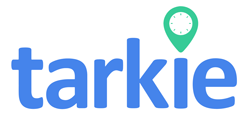Are you sure your payroll method is right? Could you be missing out on money for your business and employees? In the Philippines, where laws change often, payroll automation is key for SMEs to handle payroll well.
Payroll automation makes sure overtime and holiday pay are correct. It also makes payroll easier, faster, and more accurate. For example, Ninja Patches cut payroll time from 8 hours to 4 hours for 25 employees. This lets businesses grow and reduces mistakes.
By using technology, SMEs in the Philippines can pay employees right for overtime or holidays. They also get to know their labor costs better. This helps in planning staff and budgets. In this article, we’ll see how payroll automation makes sure employees get what they deserve. We’ll also talk about how it changes businesses.
Key Takeaways
- Payroll automation can halve processing time, making payroll management efficient for small teams.
- Accurate payroll calculations help prevent costly errors and penalties.
- Automated systems ensure compliance with evolving labor laws and tax regulations.
- Employee morale improves with timely, accurate paychecks thanks to automation.
- Real-time insights into labor costs aid in strategic decision-making for SMEs.
The Importance of Payroll Automation for SMEs in the Philippines
Payroll automation is a big help for SMEs in the Philippines. It makes work easier and helps follow local laws. It simplifies tasks like overtime and holiday pay.
Small and medium businesses often find it hard to handle payroll and HR. They have fewer than 10 employees and face money and planning issues. They need solutions that fit their size.
Cloud payroll software helps SMEs with overtime, absences, and holiday pay. For example, if an employee works on a holiday, they might get up to 260% of their regular pay. This makes complex pay easier to manage.
Switching to automated payroll takes 2 to 6 weeks. During this time, running payroll twice helps check for errors. This way, businesses avoid mistakes and can grow.
By using payroll automation, businesses get many benefits. They can set up payroll how they want, keep digital records, and get useful data. These features help manage better and avoid fines. For SMEs, using automation is key to success.
Understanding Overtime Pay in the Philippines
Overtime pay is key in the Philippines, making sure workers get paid for extra work. Laws set out how overtime pay should be calculated. It’s important for employers and employees to know their rights and how to avoid mistakes in overtime pay.
What Constitutes Overtime Pay?
In the Philippines, *overtime pay* is for work done over eight hours a day. Workers get 25% more pay for overtime on regular days. On holidays or rest days, they get 30% more. Knowing this helps employers and employees follow the law and get fair pay.
Legal Requirements for Overtime Pay Calculation
The law has clear rules for *overtime pay*. To find the hourly rate, divide the daily wage by 8. Overtime pay is 25% more on regular days and 30% more on holidays. These rules help protect workers and keep employers in line.
Common Miscalculations and Errors in Overtime Pay
Even with clear rules, mistakes happen in overtime pay. About 88% of payroll errors are due to human mistakes. These errors can upset employees and lead to legal trouble. Using payroll automation can help avoid these problems by following the law accurately.

| Type of Overtime | Pay Rate | Calculation Example |
|---|---|---|
| Regular Day Overtime | 125% of hourly rate | ₱100 x 1.25 = ₱125 (3 hours: ₱375) |
| Rest Day / Holiday Overtime | 130% of hourly rate | ₱100 x 1.3 x 3 = ₱390 |
| Regular Holiday Overtime | 200% of hourly rate | ₱300 x 2 x 1.3 x 3 = ₱2,340 |
Holiday Pay: What You Need to Know
Understanding holiday pay is key for employers and employees in the Philippines. This section explains the basics of holiday pay. It highlights the differences between regular holidays and special non-working days. Knowing this ensures you follow labor laws and avoid disputes.
Definitions of Regular Holidays and Special Non-Working Days
In the Philippines, there are official regular holidays and special non-working days. Regular holidays are big national celebrations. Special non-working days are for cultural or religious events. Employers need to know these to pay employees right.
Holiday Pay Rates: Calculating Compensation
Figuring out the right holiday pay rate is important. On regular holidays, employees get 200% of their hourly rate. For special non-working days, it’s 130% of their hourly rate. For example, if an employee makes ₱500 an hour, they get ₱1,000 on regular holidays. On special days, it’s ₱650 an hour.
Legal Considerations for Holiday Pay Compliance
Following holiday pay rules keeps workplaces happy and avoids legal trouble. Employers must keep up with holiday pay laws. They need to know when to pay and how to calculate it. Using payroll automation helps with this and makes payments more accurate.
How Payroll Automation Calculates Overtime and Holiday Pay Accurately
Payroll automation makes it easier to figure out overtime and holiday pay. It tracks employee hours in real-time. This means every hour worked is recorded accurately, improving payroll accuracy a lot.
An employee making ₱500 a day for 22 days in a month would get ₱11,625. This includes regular pay and overtime at 125% of the regular rate.
Employers must follow legal rules when handling payroll. This includes registering with BIR, SSS, PhilHealth, and Pag-IBIG. Payroll automation helps them stay compliant easily, even with post-payroll tasks.
Automated systems connect time tracking, regulatory reports, and payroll smoothly. This cuts down on errors and delays.
Holiday pay rules say work on holidays is paid at 200% of the daily wage. For salaried workers like those earning ₱600,000 a year, automation makes holiday pay easy to calculate. This ensures their pay reflects extra work on holidays.
Payroll systems also generate automated pay stubs. This gives employees a clear view of how their wages are calculated. It builds trust and transparency.

The Advantages of Using Payroll Automation Software
Payroll automation software is a game-changer for small and medium enterprises in the Philippines. It boosts efficiency and cuts down on errors in payroll management. This change helps businesses follow labor laws better and makes payroll processes smoother.
Increased Accuracy and Reduced Errors
Payroll software is great at keeping employee data up to date and accurate. This reduces mistakes in how employees are classified and their pay. Automated systems check for errors before pay is sent out. This leads to a big drop in errors, making sure data is right for all future pay calculations.
Streamlined Payroll Processing for Busy SMEs
Old methods of payroll can be a big problem for many businesses. They often struggle with keeping employee data correct. Payroll automation makes payroll work much faster, saving a lot of time. This means businesses can use their staff better, making them more productive.
| Aspect | Manual Payroll Process | Automated Payroll Process |
|---|---|---|
| Time Spent | Several days of reconciliation | A few hours or less |
| Error Rate | Higher due to manual entry | Significantly lower with automated checks |
| Cost Efficiency | Higher costs due to paper and labor | Direct savings through man-hour reduction |
| Regulatory Compliance | Manual tracking and potential penalties | Timely and accurate deductions and filings |
Switching to payroll automation gives SMEs the tools to handle payroll easily. It helps businesses work better and faster, making sure employees get paid right and on time.
Integrating Time Tracking Software for Effective Payroll Automation
Adding time tracking software to payroll systems is key for businesses. It helps track employee hours and makes payroll easier. This way, companies avoid the errors of manual payroll and get more accurate results.
Types of Time Tracking Solutions Available
- Biometric Systems: These use fingerprints or facial scans to log in employees. They cut down on fake time entries and ensure accurate records.
- Mobile Apps: Great for remote teams, these apps let employees clock in and out on their phones. They offer flexibility and precision.
- Time Clock Software: These desktop apps make clocking in and out simple. They provide a reliable way to track hours worked.
Benefits of Accurate Time Tracking for Payroll
Time tracking solutions offer many benefits for payroll. They cut down the workload by 40% and speed up payroll by up to 30%. Automated systems can process payroll in 20 minutes, compared to four days with manual methods.
Employees feel more valued when their hours are right. This boosts their job satisfaction by 25%.
![]()
Not tracking hours right can cost businesses from $1,000 (₱56,000) to $10,000 (₱560,000). Reliable time tracking systems are crucial. They help companies follow labor laws and avoid expensive errors. This makes payroll more efficient and in line with current rules.
Compliance with Labor Law Regulations through Automation
Keeping up with labor laws is key for businesses in the Philippines. Automated payroll systems are vital for making sure wage and hour rules are followed. They help avoid mistakes and make it easier to follow the Fair Labor Standards Act and other laws.
Understanding Wage and Hour Compliance
Wage and hour laws are strict about how much employees get paid, including overtime and holiday pay. Automated payroll systems greatly improve compliance, cutting down errors by up to 85% says the International Labor Organization. Companies using these systems avoid costly pay disputes and misunderstandings, as confirmed by the Department of Labor and Employment (DOLE).
Adapting to the Fair Labor Standards Act Requirements
The Fair Labor Standards Act sets clear rules for businesses to follow. Companies like Amazon and Starbucks use automated HR to meet these standards. They use strong HR software to track hours, check certifications, and keep important records. This approach cuts down on errors and lowers the risk of breaking labor laws.
| Company | Automation Benefits |
|---|---|
| Amazon | Enhances compliance efficiency for a large workforce |
| Starbucks | Monitors employee certifications and work hour restrictions |
| IBM | Ensures adherence to labor regulations through accurate tracking |
| Walmart | Centralizes HR data for effective labor law compliance |
| McDonald’s | Digitizes time tracking and compliance reporting |
Investing in automated systems helps businesses meet labor law needs. This leads to a more reliable and efficient payroll process. It also makes employees happier with fair and clear pay.
Ensuring Accurate Payroll Calculations with Automated Payroll Processing
Automated payroll processing is key for accurate pay calculations. It streamlines the process, making it more efficient. It also ensures you follow labor laws.
Creating clear payroll policies is the first step. These policies guide how overtime and holiday pay are figured out. They must meet Fair Labor Standards Act and other laws.
Steps to Implement Effective Payroll Automation
Choosing the right software is the first step in automating payroll. It should work well with your employee database. This makes it easy to get to employee info like tax status and pay rates.
Training your payroll team is crucial. It helps them get the most out of the automated system. Also, checking payroll data regularly helps spot errors before they cause problems.
Maintaining Employee Database for Accurate Payroll
A good employee database is essential for accurate pay. It keeps track of employee details, like taxes and benefits. This info is used for deductions and contributions.
Automated systems help keep this database up to date. They reduce the chance of errors from manual entries. Plus, keeping payroll records for 3–7 years is a must. It’s for audits or investigations later on.

Customization in Payroll Automation for Different Business Needs
Payroll automation solutions meet the unique needs of various businesses. They offer payroll customization that fits different business models. Companies today have diverse workforces, making it key to adjust pay rates and policies.
Automatic adjustments keep things accurate as businesses grow. This ensures everyone gets paid right.
Setting Up Different Pay Rates for Diverse Workforce
It’s important to set different pay rates for different roles. Automation makes this easier. Businesses can set pay based on experience, skill, or job type.
This payroll customization ensures fair pay for all. It also cuts down on errors found in old systems.
Advanced systems make it easy to update pay rates. This avoids financial problems and keeps employees happy. Gusto and QuickBooks offer flexible options for businesses.
Adjusting Payroll Policies in Response to Business Changes
As business needs change, so must payroll policies. Automation makes this easier. It lets companies update policies quickly, saving time.
Employees get their pay on time, boosting morale and keeping them around. Employers use automated insights to make smart policy changes. This helps them stay ahead and follow rules.
To learn more about integrating payroll with timekeeping, check out this guide on integrating timekeeping software.
| Payroll Software | Monthly Cost | User Rating (Capterra/G2) | Notable Features |
|---|---|---|---|
| Gusto | $40 (₱2,240) + $6 (₱336) per person | 4.7 / 4.5 | Custom templates, automation efficiency |
| QuickBooks | $15 (₱840) – $100 (₱5,600) | 4.3 / 4.4 | Varied pricing plans, easy integration |
| RUN Powered by ADP | Custom pricing | 4.5 / 4.5 | Comprehensive business solutions |
Conclusion
Payroll automation is a game-changer for SMEs in the Philippines. It boosts efficiency and makes sure they follow labor laws. With over 44 million workers, managing overtime and holiday pay is a big task. Automated payroll helps simplify these tasks and ensures employees get fair pay.
Many businesses see the benefits of using automated payroll software. Over 60% of Philippine companies use it to make their payroll work smoother.
The Philippines has a lot of public holidays, making holiday pay tricky. Automated systems help avoid mistakes in holiday pay, which is a big problem for 40% of companies. As laws change, having good payroll automation is key to staying legal and keeping employees happy.
Choosing the right payroll automation is crucial for businesses to stay ahead. It helps avoid pay disputes and keeps employees content. For more on improving your payroll, check out this guide on payroll automation features. Making smart choices in payroll can help your business grow and thrive.
